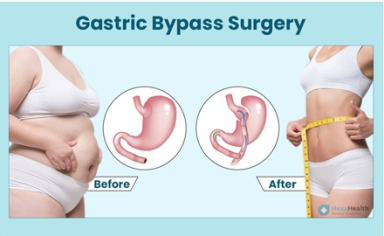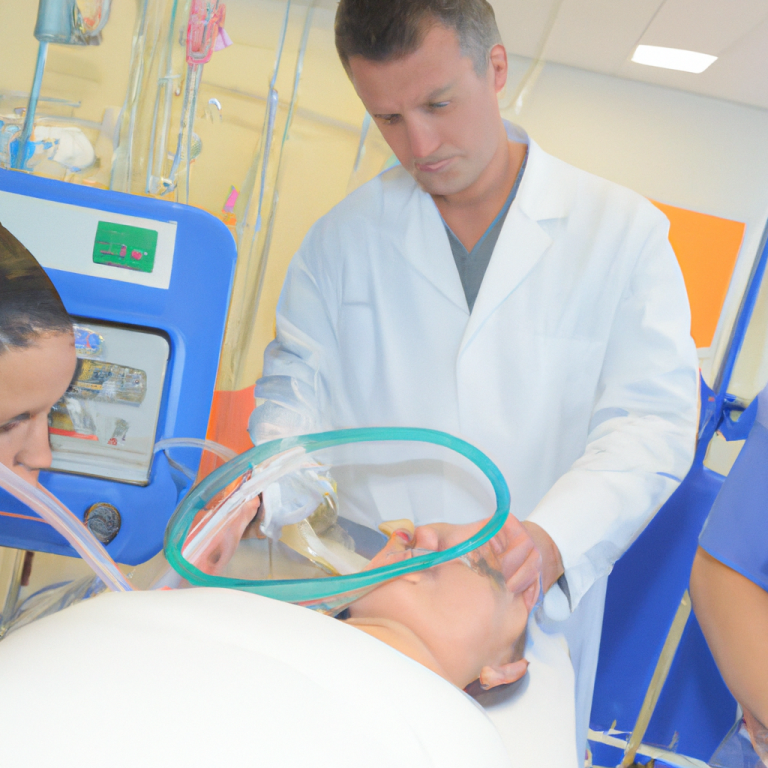
What is Bariatric Surgery?
Bariatric surgery can help people lose weight and live healthy, active lives. There are several types of bariatric surgery procedures, but all work by changing the stomach to limit the amount of food you can eat at one time, reducing your appetite, and reducing the ability of the body to digest the food consumed. It modifies the digestive system to restrict food intake, reduce the absorption of nutrients, or both.
Types of Weight Loss Surgeries
Our team consists of highly qualified and motivated professionals, who are all experts in their field. With many years of experience in the industry, they have the expertise to provide comprehensive, first-rate services to our clients.

GastricBypassSurgery
How it works
Gastric bypass surgery is the most common bariatric procedure that helps in significant weight loss by altering the digestive system. It reduces the capacity of the stomach and rearranges the small intestine to limit food intake and nutrient absorption. This helps patients achieve and maintain a lower body weight.

Endoscopic Intragastric Ballooning
How it works
Intragastric ballooning is a procedure that involves inserting a deflated silicon balloon into the stomach of a patient. It is a new type of minimally invasive bariatric treatment. A weight loss balloon is often suggested to patients who are obese or overweight. It works in combination with lifestyle changes such as changes in diet and regular exercise.

Swallowable WeightLoss Ballooning
How it works
A swallowable capsule balloon is a state-of-the-art technology. It is the first-ever ingestible capsule that is converted into a balloon after entering the stomach.
The capsule balloon is made of silicone and requires no anesthesia for its placement or removal. It is a smoother and procedure-less treatment compared to other surgical procedures for weight loss in obese individuals.
Swallowable gastric ballooning is a non-invasive, non-endoscopic weight loss treatment. The process is similar to that of balloon placement using endoscopy.
Conditions Treated with Bariatric Surgery
Bariatric surgery is an effective weight management option. Moreover, it also improves several obesity-related conditions, including:
Who is a candidate for Weight Loss Surgery?
Qualifying for this procedure involves meeting specific medical guidelines -
No Comorbidities
Body Mass Index (BMI) of 40 or more without comorbidities.
Comorbidities
Body Mass Index (BMI) of 35-39.9 with comorbidities such as type 2 diabetes, high blood pressure and/or sleep apnea.

Commitment
Long term commitment to lifestyle changes such as exercise and diet.
Bariatric Surgery Procedure
There are various types of bariatric surgery, each of which helps in weight loss by altering the structure of the digestive system. The techniques for these types differ. The surgeon decides the best approach based on the patient's condition. The most common procedures include:
Gastric Bypass
A small pouch is created at the top of the stomach using surgical staples. It is then connected directly to the lower part of the small intestine. After surgery, food bypasses the rest of the stomach and the upper portion of the small intestine. The procedure takes approximately two hours.
Sleeve Gastrectomy
The surgeon makes five minor cuts in the abdomen to remove 80% of the stomach. The sleeved-shaped stomach reduces the amount of food eaten at once. Bariatric sleeve surgery takes between 1-3 hours.
Lap Band
A silicone band is placed around the upper stomach. A port connected to the band allows for adjustment. The port inflates the band, which tightens like a belt to create two smaller sections. This restricts food intake. The complete procedure takes 3-4 hours.
BPD/DS
This procedure combines both gastric sleeve and gastric bypass. In this procedure, 75% of the small intestine is bypassed. This significantly reduces the absorption of nutrients and calories and limits food intake.
Alternatives to Bariatric Surgery
Patients can also opt for less invasive alternatives to bariatric surgery. These techniques use an endoscope inserted through the mouth and into the stomach. The following are two common procedures for weight management:

Intragastric Ballooning
This involves placing a silicone balloon inside the stomach to occupy space and promote a feeling of fullness. The balloon is left in place for six months before being removed. It can help patients lose up to 15% of body weight.

Endoscopic Sleeve Gastroplasty
This involves placing a series of sutures in the stomach to reduce its size by 70%. It helps patients lose up to 20% of their body weight.
Cost of Bariatric Surgery
Several factors including the skill and experience of the surgeon, hospital and type of surgery influence the cost. For example, a gastric bypass surgery is more expensive than an adjustable gastric banding due to its complexity.
All Inclusive Cost
Includes air fare from home country to India, local accommodation, local transportation, assistance and medication.
Average Range *
US$4,000 - $12,000
*Will vary based on home country distance from India, type of surgery and the length of stay necessary. Contact us for a specific quote.
©Copyright. All rights reserved.
We need your consent to load the translations
We use a third-party service to translate the website content that may collect data about your activity. Please review the details in the privacy policy and accept the service to view the translations.





